You will need:
- keys on "17" And "19"
- mount
Inspection interval: Every 15,000 km, check the condition of the belt. If the belt is damaged, replace it.
If, during inspection of the belt, tears, fraying, or delamination of rubber are found, replace the belt. If there are traces of grease on the belt, we also recommend replacing it. Before installing a new belt, be sure to wipe all the pulleys driven by the belt with a rag soaked in gasoline.
Attention! Insufficient belt tension impairs battery recharging and leads to increased belt wear.
Attention! Too much tension can damage the alternator bearings.
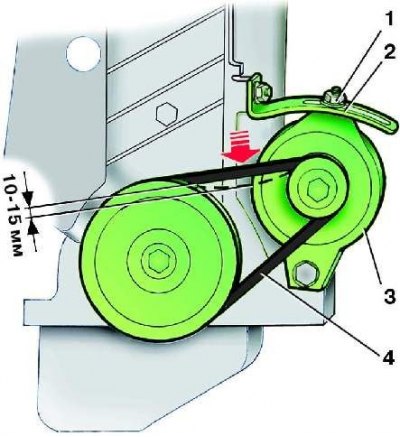
According to the manufacturer, the alternator drive belt should bend 10–15 mm at a force of 100 N (10 kgf).
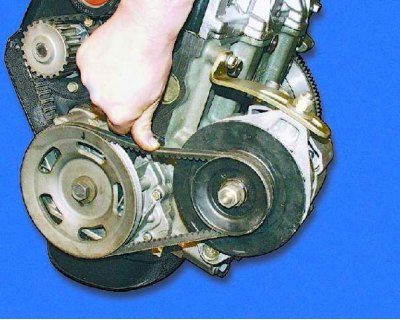
1. Press your thumb on the belt in the middle between the alternator and crankshaft pulleys. The belt should bend 10-15 mm. If the deflection is greater or less, the belt tension must be adjusted.
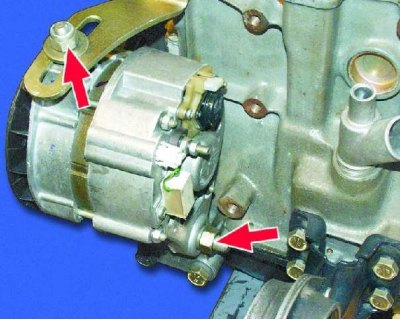
2. Loosen the two nuts securing the alternator.
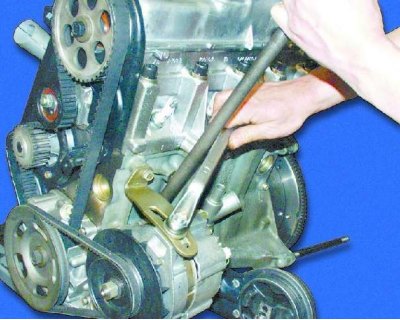
3. Insert a pry bar between the alternator housing and cylinder block. To tighten the belt, carefully press the alternator away from the cylinder block. To loosen the belt, move the alternator towards the cylinder block.
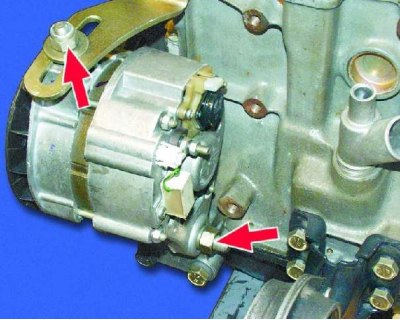
4. Tighten both nuts.
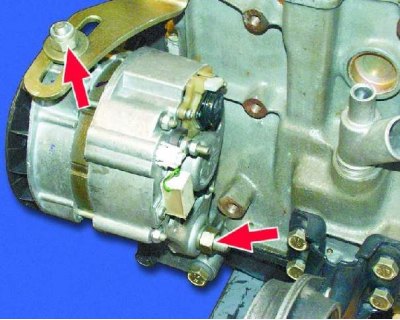
5. Turn the crankshaft two turns clockwise with a wrench and check the belt tension again. If necessary, repeat the adjustment. Finally tighten both generator mounting nuts.
